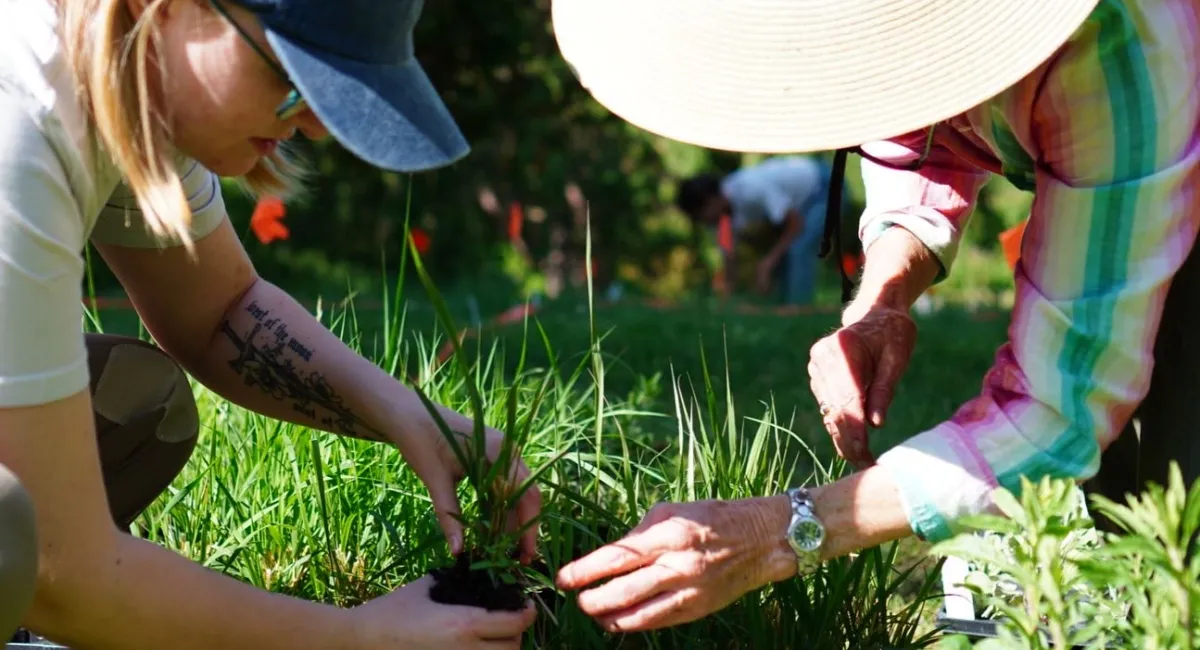Leave the Leaves!
One of the most valuable actions we can take to create habitat for pollinators and other insects is to provide year-round cover and nesting sites. Leaving fallen leaves and dead plant material during the fall, winter, spring and summer is the best way to ensure that insects have the essential shelter to complete their life-cycles. These insects, in turn, are a crucial food source for birds, and the dead plant material also provides birds nesting material and screening for safe foraging.
Removing fallen leaves and cutting perennials to the ground are well-ingrained garden practices. However, it’s within this debris that bees, caterpillars, beetles, spiders, and other insects make their home, find protection from the elements, or lay their eggs. As the Xerces Society explains in this article, “the vast majority of butterflies and moths overwinter in the landscape as an egg, caterpillar, chrysalis, or adult.” If we discard this debris, we also discard the following season’s insect diversity before they complete their life cycles!
Grow Wild’s garden clean-up tips
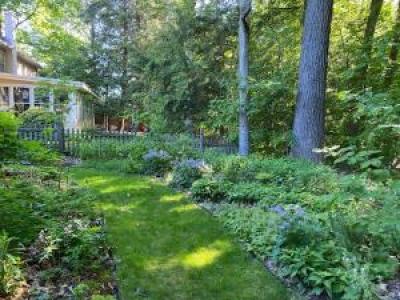
Focus on neat edges. It's important to show that a yard is being taken care of. Tidying a 6-12” strip along the front of garden beds and walkways, while leaving leaves and plant debris in the interior, demonstrates intention while still maintaining insect habitat.
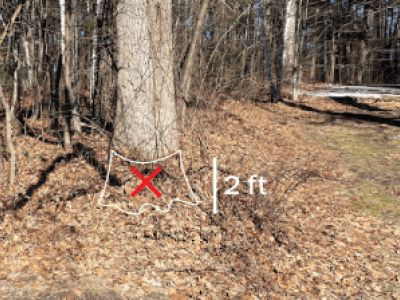
Keep leaf accumulation natural. Avoid blowing or piling extra leaves onto garden beds or into forest edges. More than 6” of leaf cover can smother even native woodland plants.
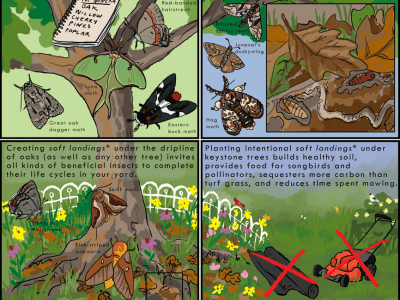
Designate areas for Soft Landings. Leaving natural, unshredded leaf litter directly under trees and shrubs allows insects to complete their life cycles. Plan areas under trees where the leaves can be left in place then add some pollinator plants. Additionally, the nutrients of this leaf litter are recycled back to the tree.
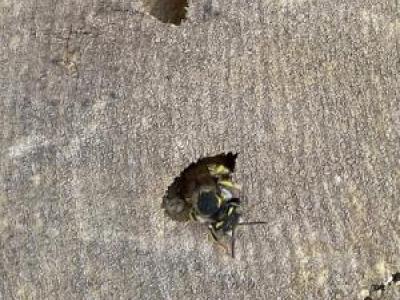
Maintain some dead wood and brush piles. A diverse number of insects utilize decomposing stumps, logs, and branches as food or nesting sites. The tunnels they create may be used as nesting sites for solitary bees. Moreover, many birds forage on the protein-rich insects living within decomposing wood, and find much-needed shelter within the branches of a brush pile. Here are additional brush pile tips from the NurtureNativeNature blog.
Manage excess leaves
It’s understandable that not every leaf can be left where it falls. Designate an inconspicuous area where leaves and plant material collected from sidewalks, storm drains or lawns can be piled whole to decompose over time. If you don’t have a need for compost, take the leaves to a municipal compost facility. Leaves that fall on the lawn can be mowed to recycle their nutrients for the lawn and nearby tree roots.
Leave flower stalks standing
Stem-nesting bees utilize the pithy or hollow stems of perennial flowering plants and grasses in which to lay their eggs. Different species emerge in different months over the course of the season. Cutting dead stalks to 8-24” tall, rather than to the ground, provides the female bees nesting opportunities. Drop the cut pieces at the base of the plant for a natural mulch, which may also be used for nesting. New green shoots will quickly grow to hide dead stems. The University of Minnesota Bee Lab handout is an excellent summary. This North Carolina State Extension article lists favored plant species.

Resist the spring clean
Although Champlain Valley humans seem to ignite into action with the first warm day of spring, insects are different. Each of the vast number of insect species are cued to hatch from eggs or emerge from pupae as adults based on a unique “combination of day length and accumulated degree days”, which happens in different months, spring through fall, as explained by entomologist Doug Tallamy. Leaving plant material all year long ensures that insects have essential shelter to complete their life-cycles.
Cutting back stems
Some of our native bees nest in last year’s dead flower stems or woody cavities. Heather Holm, biologist, award-winning author and pollinator conservationist in Minnesota, helped create the linked graphic below and shared these photos to explain how they use the dead stalks.
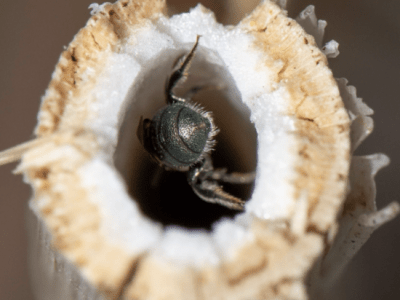
Our native stem-nesting bees will lay their eggs in dead stalks and provision the egg cells in year one. The eggs hatch into larvae which mature into adults over the next 11 months if they’re not disturbed.
IF we need to cut back garden stems, we look for the
- pithy or hollow dead stalks that have
- ⅛ inch or greater centers and
- cut them to 8-24” tall,
Break the rest into pieces to leave around the plants as mulch and recycle their nutrients naturally. New green shoots will quickly grow to hide the dead stems.
That’s a small carpenter bee working on its nest in a pithy stem and a cross section of a mason bee nest in old wood.

